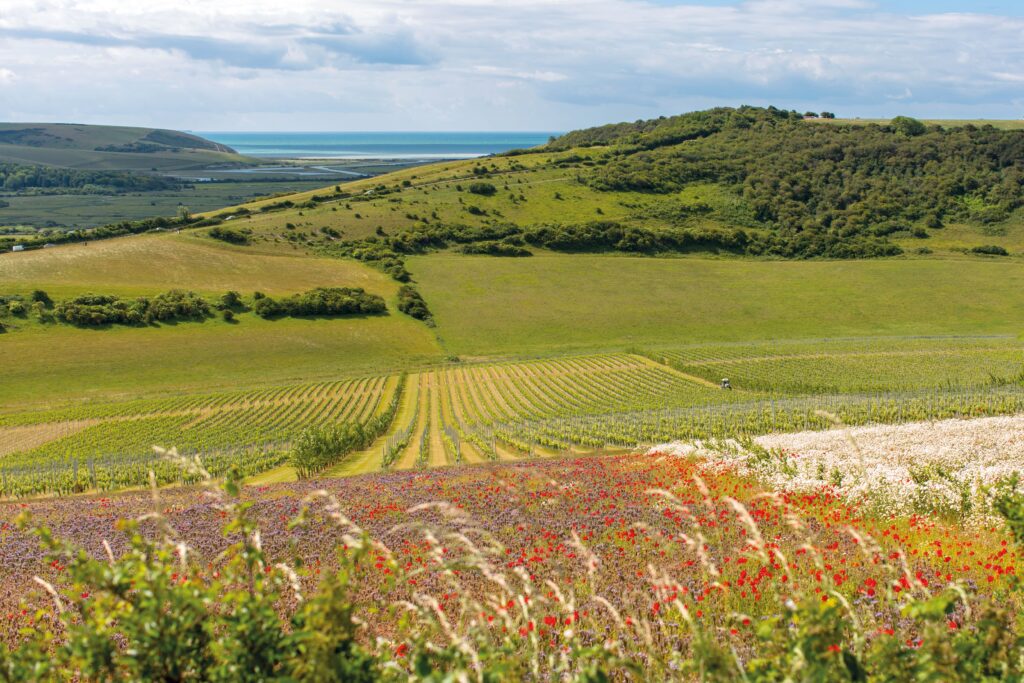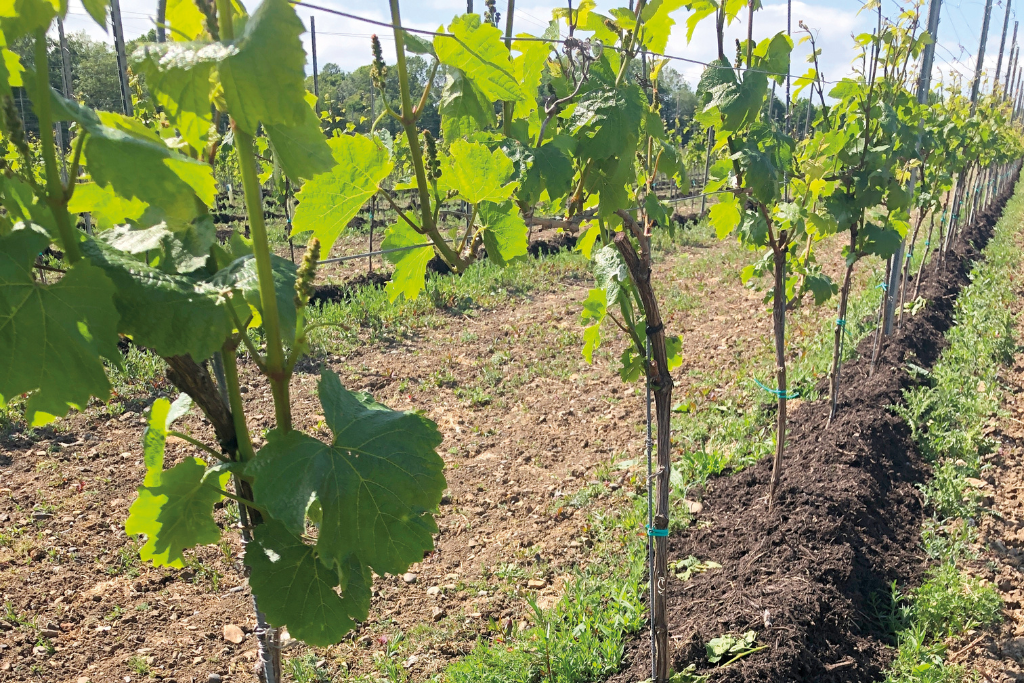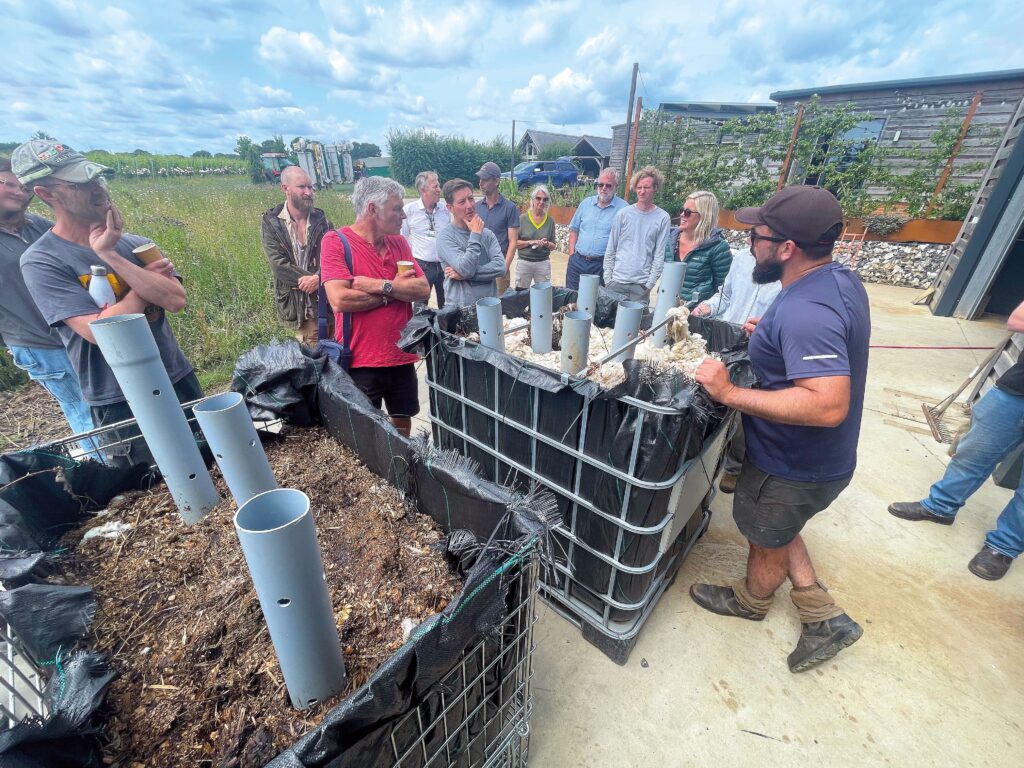How to get started with regenerative viticulture?
18th September 2023
With a spotlight currently on improving sustainability in farming, Becky Sykes, programme director at the recently launched Regenerative Viticulture Trust, spoke to Fruit & Vine about how British vineyards could benefit from regenerative techniques.

Q. How does regen differ from biodynamics or organics?

Becky Sykes, programme director at the Regenerative Viticulture Trust.
A: Regen has many similarities to both biodynamics and organic, in that it aims to break free from the chemical monoculture that is conventional viticulture. However, it is not a set of prescriptive rules; it involves incorporating practices that improve soil health. By revitalising the microbiome of the soil, the vine can obtain nutrients from the soil and build resilience to disease.
The principle point of difference with organics and biodynamics (as practised by many) is that regenerative viticulture (RV) places a lot of emphasis on not disturbing the soil, and avoiding tillage where possible. Working in concert with nature, rather than against it, restores biodiversity, improving quality and potentially having a positive impact on profitability. It also sequesters carbon in the soil, helping to mitigate climate change.
Q. What are the pros and cons?
A: Conventional viticulture involves short feedback loops – the vineyard manager spots a problem, applies a solution and expects an immediate outcome. However, this short-term improvement will likely then require further treatment. These treatments are often damaging to the microbial life in the soil which reduces soil health and vine resilience, making more inputs necessary, which is costly to both profitability and the planet.
With RV, however, the addition of organic matter and minimising soil disturbance increases the microbial activity in the soil. Keeping the soil covered with green sward all year round increases carbon sequestration and builds fungal networks in the soil. The vines can then obtain the nutrients they require without fertilisers and the pathogen-fighting microbes build resilience to disease. When it is hot and dry, soil with plants growing on it is up to 20ºC lower in temperature and retains moisture.
But it isn’t possible to flick a switch to regen. As it takes time to build up soil health, it’s really important for growers to transition gradually, to have plant and soil health analysed and to take advice from knowledgeable agronomists. Regen vineyard managers find themselves becoming experts in soil analysis, composting, mulching, etc. These might be new areas for some growers, which is why we are forming support groups for growers to give each other advice.

Compost spread undervine using a side spreader at Penn Croft Vineyards in Hampshire.
Q. What three pieces of advice would you give to growers looking to start RV?
A: 1. First, find a mentor. Make friends with someone nearby who has similar conditions and is a bit further down the regen journey. Go along to their vineyard for some suggestions. Check out their compost pile and take notes – it’s the ultimate recycling and a fast-track way to improve your soil health. If you can’t find a local mentor, get in touch and we will help.
- Don’t go cold turkey on chemical monoculture! Maybe start trying no-till in just one block. Allow the sward to regenerate under your vines and observe what plants grow. Everyone talks about cover crops, but native plants can perform a great job. Make sure you have a means of cutting the growth back every now and then. There are lots of options, but once you’ve got the bug and converted your whole vineyard, you might want to get a side discharge mower to place cuttings undervine, acting as a pretty handy mulch.
- Contact a regen-friendly soil analysis lab and have samples analysed for all the different blocks. And keep really good records. There are some great apps out there these days. Then you’ll know what you’re working with and what is working for you.

Viticulturist Matt Robson (far right) speaks to guests at an RVT farm visit at Harrow and Hope Vineyard in Marlow, Buckinghamshire.
Q. How does the Regenerative Viticulture Trust help growers on this journey?
A: We aim to provide support for growers wherever they are on this journey – and wherever they are in the world. In the UK we have held two workshops and our first farm visit, which was a huge success. It can be lonely breaking away from convention, and support is vital.
Our website is a source of information on the ‘why?’ of regenerative viticulture, as well as starting to build the resources for the ‘how?’ of RV. Alongside this, we are working on providing evidence behind its viability – both the scientific case and profitability.
Q. What’s in the pipeline for the charity?
A: We only launched in 2022, and a lot has happened in that time. The main focus at the moment is developing an online self-assessment tool, which will enable growers to look at what they are doing now and see which practices they might implement to improve their soil health and biodiversity.
We are also conducting a literature review to fully understand the scientific evidence behind RV practices and identify any gaps. And we are starting to identify regional champions who could help set up grower support groups around the world. Later in the year we will be including a whole set of resources for each of the practices we recommend.
